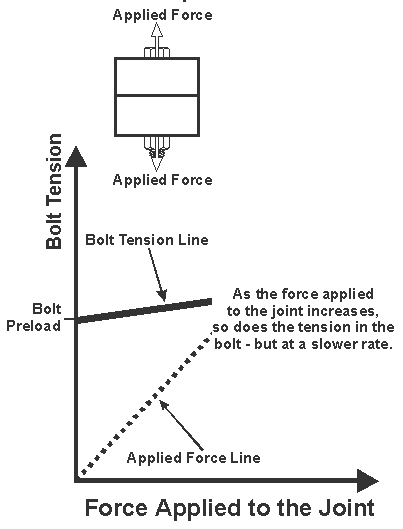

Bolt inspections and retightening routines are common and reoccurring across several industries. Here, Dr Bill Eccles of Bolt Science Ltd outlines the most common causes for bolted joints failure and how this failure can be avoided.
 The most common reason bolted joints fail is due to the bolt’s inability to provide sufficient preload and thus prevent the external applied forces from overcoming the clamp force acting between the joint faces.
The most common reason bolted joints fail is due to the bolt’s inability to provide sufficient preload and thus prevent the external applied forces from overcoming the clamp force acting between the joint faces.
The image presented here (left) illustrates the joint decompression point. This is when the clamp force acting between the joint faces, that has been provided by the bolt's preload, has been reduced to zero by the applied forces.
 Once the joint faces have separated, the bolt will be subjected to bending forces and the joint faces to fretting. This will inevitably lead to a loss of preload, meaning the bolt will fail by fatigue or other mechanism. This is why the decompression point is taken as a design failure criterion.
Once the joint faces have separated, the bolt will be subjected to bending forces and the joint faces to fretting. This will inevitably lead to a loss of preload, meaning the bolt will fail by fatigue or other mechanism. This is why the decompression point is taken as a design failure criterion.
The importance of having a high preload can be illustrated by using the decompression point, as illustrated by the image here. As can be seen (right), a higher preload raises the decompression point. For this reason, it is better to tighten a fastener close to its limit rather than only partially tightening it.

Becca is the latest member to join our team and is eager to get stuck into the world of fasteners. She brings an enthusiastic and fresh outlook on what we do editorially and will be leading our social media activity – including sourcing material, editing articles and posting online.





